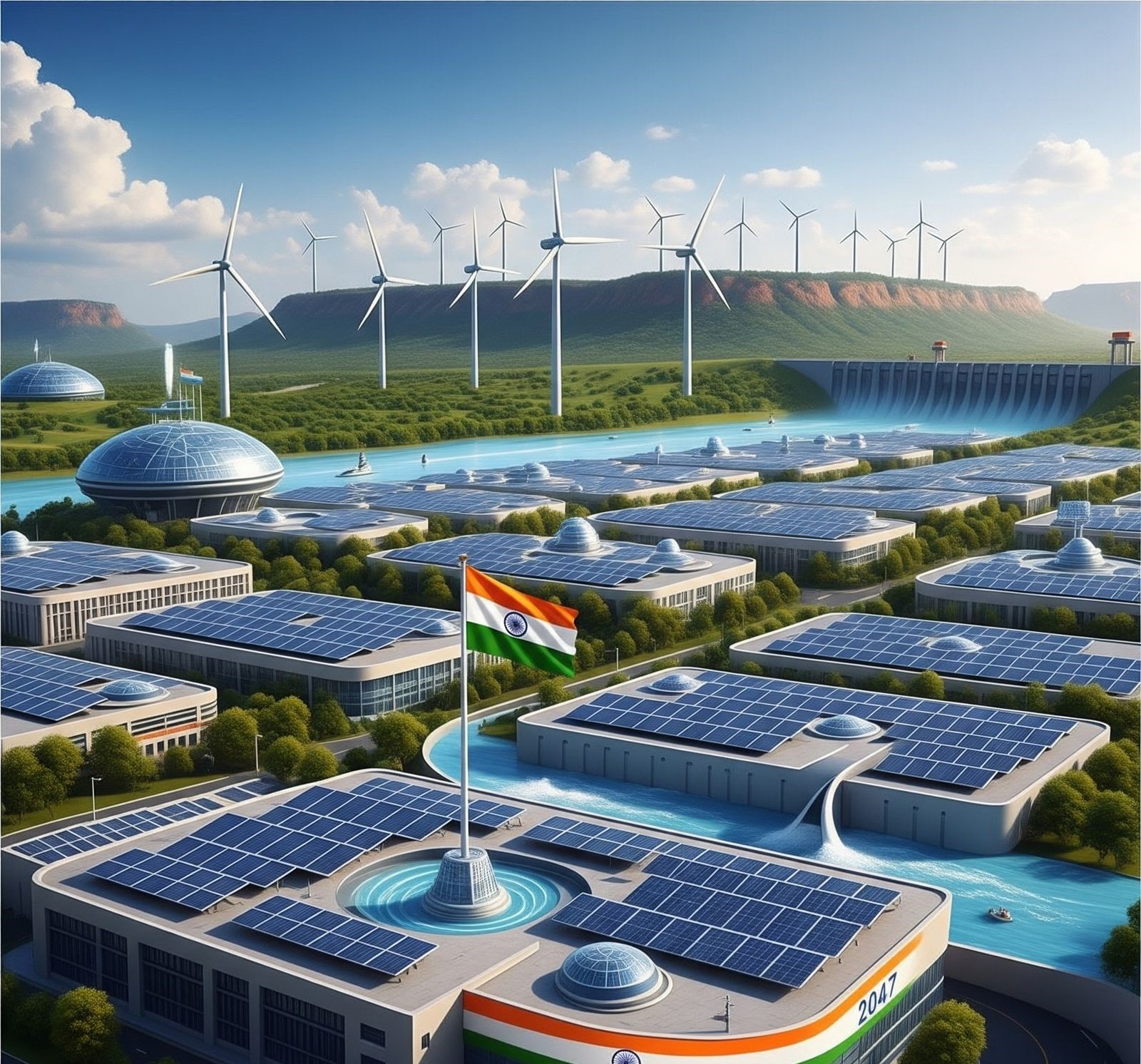India’s Clean Energy Revolution: Ambitious Targets and Transformative Potential
India is at the forefront of a global clean energy revolution, setting some of the world’s most ambitious targets for renewable energy adoption, carbon emission reduction, and green technology development. As the nation’s population grows and rural electrification accelerates, India is transforming its power sector to meet future demands sustainably and responsibly.
Ambitious National Targets
India has laid out a comprehensive roadmap to reshape its energy landscape:
- Carbon Intensity Reduction: The government has pledged to reduce the carbon intensity of its economy by less than 45% by 2030, compared to 2005 levels.
- Renewable Energy Expansion: By 2030, 50% of the country’s cumulative electric power installed capacity will come from renewable sources.
- Net-Zero Commitment: India aims to achieve net-zero carbon emissions by 2070, aligning with global climate goals.
- Green Hydrogen Production: The target is to produce five million tonnes of green hydrogen annually by 2030, supported by a projected electrolyser manufacturing capacity of 8 GW per year by 2025. To meet this, India will require at least 50 GW of electrolysers.
- Market Growth: The cumulative value of the green hydrogen market in India could reach $8 billion by 2030, while the broader low-carbon technologies market may be worth up to $80 billion by the same year.
Transforming the Power Sector
India’s renewable energy ambitions are already having a transformative effect on the country’s power sector:
- Rising Renewable Share: According to the Central Electricity Authority (CEA), the share of renewable energy in electricity generation is expected to rise from 18% in 2023-24 to 44% by 2029-30. During the same period, the share of thermal (mostly coal-based) generation is projected to fall from 78% to 52%.
- Future Demand: India’s power requirement is expected to reach 817 GW by 2030, driven by economic growth and increased electrification.
- Wind-Solar Hybrid Capacity: Between 2020 and 2025, around 15,000 MW of wind-solar hybrid capacity is expected to be added, enhancing grid reliability and renewable integration.
- Battery Storage and Cost Reduction: By 2040, about 49% of electricity is projected to come from renewables, with advanced battery storage cutting solar energy costs by 66% compared to current levels.
- Economic Savings: Replacing coal with renewables could save India ₹54,000 crore (US$ 8.43 billion) annually.
Investment and Market Opportunities
India’s clean energy sector has become a magnet for investors:
- Foreign Direct Investment: The non-conventional energy space has attracted FDI inflows of ₹1,43,692 crore (US$ 19.98 billion) between April 2000 and September 2024.
- Market Potential: The rapid growth of low-carbon technologies and green hydrogen is creating significant opportunities for domestic and international businesses.
Socio-Economic and Environmental Impact
The shift to clean energy is delivering broad benefits:
- Empowering Rural Communities: Widespread electrification is making villages self-sustainable, improving quality of life and economic opportunities.
- Reducing Pollution: Greater reliance on renewables is expected to lower pollution levels, contributing to better public health and environmental outcomes.
- Boosting Investor Confidence: Strong policy support and robust market growth are attracting both domestic and global investors.
Conclusion
India’s clean energy journey is a model of ambition and action. With clear targets, strong policy support, and a rapidly evolving market, the country is poised to become a global leader in sustainable energy. The coming decades will see India not only meet its growing energy needs but also drive innovation, investment, and environmental stewardship for a cleaner, greener future.




